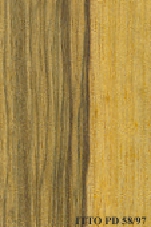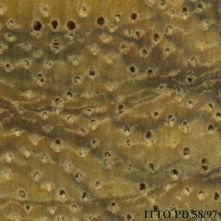
LIMBA/FRAKé (Terminalia superba)
Trade Name
Limba/Fraké
Scientific Name
Terminalia superba Engl. et Diels
Family
COMBRETACEAE
Common Names
Kojagei (Sierra Leone); Fraké (Côte d`Ivoire); Frake (Benin); Noyer du Mayombe (for woods with black heart) (France); Limba (France); Fraké (France); Korina (United States of America); Limba (Congo); N'ganga (Central African Republic); Yellow pine; White limba; Weiss; Unwonrom; Tra; Shingle wood; Pe; Owebala; Ojiloko; Offram; Noyer limbo; Noyer du Mayombe; Noyer; N`limba; N`kom; N`dimba; Mukonja; Moukonia; Limba noir; Limba clair; Light limba; Landi; Kumkunbe; Kosina; Korina; Kongo; Kone; Kom; Kojag?i; Kojaagei; Kegblale; Ka-ren; Gbararada; Frany; Frango; Frane; Framo; Frameri; Fram; Frak; Faraen; End; Eji; Egoyin; Egonni; Egoin nufua; Egean; Edo; Djombe; Dark noir; Dark limba; Congo walnut; Chene-limbo; Chene limbo; Bokone; Blie; Bese; Baya; Bale; An rin; Akam; Aghan; Afraa; Afodonko; Afia afia; Afa; Konira (United States of America); Noyer du mayobe (France); Frake (France); Limbo (France); Limba (Zaire); Limba Limba (Congo); N`ganga (Central African Republic); Akom (Equatorial Guinea); Akom (Cameroon); White afara (Nigeria); Afara (Nigeria); Ofram (Ghana); Frake (Côte d`Ivoire); Limba (Angola)
Scientific Name Synonyms
Terminalia altissima A. Chev.
Description Of The Tree
Botanical Description
The tree has a total height up to 35 m, with diameters up to 130 cm. The boles are straight and cylindrical. It presents 4 buttresses up to 4 or 5 m tall.
Natural Habitat
Terminalia superba occurs in small dense forests, rain forests and in savanna forests.
Natural Distribution
West and Central Africa, from Sierra Leone to Angola and the Democratic Republic of the Congo.
Plantations Available?
Because of its easy growth and timber qualities it has been tested for plantation in many countries. Acclimatization trials have been conducted outside of its natural habitat in Africa (Burundi, Tanzania, Uganda, Dem. Rep. of the Congo, Zimbabwe)
Wood Identification
Anatomic Description Of Wood
Wood diffuse porous. Occasionally vessels exclusively solitary (over 90%). Tangential diameter of vessel lumina 200 micras or more (large). Tyloses thin walled. Vestured pits. Vessels per mm2 less than 6 (rare). Simple perforation plates. Vessel-ray pits similar Occasionally axial parenchyma in marginal or in seemingly marginal bands. Paratracheal axial parenchyma scanty and/or vasicentric. Axial parenchyma aliform. Axial parenchyma confluent. Prismatic crystals in non-chambered axial parenchyma cells. 3 to 4 cells pe Rays more than 10 per mm (abundant). Rays non-storied. Rays exclusively uniseriate. Homogeneous rays and/or sub-homogeneous rays (all ray cells procumbent). Non-septate fibers. Fibers with simple to minutely bordered pits.
-
 Wood Macro Photo Radial Plane
Wood Macro Photo Radial Plane
-
 Wood Micro Photo Of Transversal Section
Wood Micro Photo Of Transversal Section
Availability
Cites Status
Unrestricted
General Wood Description
Color
The heartwood is yellow white, or with blackish brown veins or greyish brown heart, it is not clearly demarcated. The silver figure is fine (barely visible).
COLOR INDEX (1=Black, 7=Light yellow,white)
4
Grain
Straight or slightly interlocked, sometimes with an influence on further processing operations.
Texture
The texture varies from fine to medium.
Luster
This species is low in luster.
Natural Durability
Not durable; important risks of decay attacks at any processing step, from logs up to final products. It must receive preservative treatment. Sensible to termites attack. The heartwood is sensible to Lyctus attacks.
Natural durability index (1= Very high durability, 7=Vey low durability)
5
Internal Growth Stresses
Growth stresses are reported in this species.
Silica Content
Silica Content: This timber is reported to have a negligible silica content. Silica contents over 0.05% may affect wood processing. Silica Value: 0.01
Resistance To Impregnation
Moderately easy to treat with a partial penetration of the preservative products.
Wood Physical Properties
Basic Density or Specific Gravity (O.D. weight/vol. green) (g/cm³)
0.50
Air-dry Density (Weight and volume at 12%MC) (g/cm³)
0.54
Total shrinkage Tangential (Saturated to 0%MC) (%)
6.1
Total shrinkage Radial (Saturated to 0%MC) (%)
4.3
Drying Defects
Ease of Drying: Drying is moderately easy; some particular care is needed.
Recommended Dry Kiln Schedule
FR-3
Dimensional stability ratio (Total Tangential Shrinkage %/Total Radial Shrinkage %)
1.4
Wood Chemical Properties
Wood Mechanical Properties
Bending Strength (MOR),12%MC (kgf/cm²)
811
Stiffness (MOE) 12%MC (kgf/cm²)
119731
Compression parallel to fiber 12%MC (kgf/cm²)
475
Compression perpendicular to fiber 12%MC (kgf/cm²)
58
Shear strength radial 12%MC (kgf/cm²)
57
Janka hardness (side) 12%MC (kgf)
363
Janka hardness (end grain) 12%MC (kgf)
467
Workability
Sawing
It is easy to saw.
Rotary Veneer Cutting
Suitable for slicing and peeling.
Sliced Veneer
Suitable for slicing and peeling.
Blunting Effect
Slight blunting effect; ordinary tools can be used for sawing and machining.
Machining
Machining of this species is reportedly easy.
Planing
Easy; no particular problems.
Moulding
Easy; no particular problems.
Boring
Easy; no particular problems.
Mortising
Easy; no particular problems.
Nailing
No particular problem.
Gluing
Glues well if basic gluing technical rules are followed.
Sanding
Easy to perform; it gives good results.
Polishing
Can be polished without surface preparation.
Steam Bending
This species can be used for steam bending.
Response To Hand Tools
No particular problems.
REFERENCED USES
End Uses Summary
HOUSING GENERAL, beams, joists, boards, frames, steps, panelling, fittings, FURNITURE AND CABINETS, common furniture, PLYWOOD AND VENEER, faces, Decorative veneer, PACKING, heavy packing, pallets, OTHER AND MUSICAL INSTRUMENTS, handicrafts, door core, coffin, moldings, cementboard
General Housing
- 10 - Silica in Timbers
Beams
- 11 - Prospect: The wood database
Joists
- 12 - Tropical timbers of the world. Part I-Tropical American Species
Boards
- 13 - Dry kiln schedules for commercial woods. Temperate and tropical. Section III. Latin American (Mexico, Central, and South America) Woods–Conventional Temperatures
Frames
- 16 - Woods of the World
Steps
- 17 - Tree Conservation Database
Paneling
- 18 - W3TROPICOS Missouri Botanical Garden
Fittings
- 19 - Silica in Timbers
Furniture Cabinets
- 21 - Tropical timbers of the world. Part III-Southeast Asian and Oceanian Species.
Furniture, Common
- 23 - Handbook of Hardwoods
Panels, Veneers
- 25 - Directory of Timber Trade Malaysia
Faces
- 26 - Annual Review and Assessment of the World Timber Situation 1998-ITTO
Decorative veneer
- 28 - Ministry of Agriculture, Fisheries & Forest of Fiji
Packing
- 45 - Recopilación y Análisis de Estudios Tecnológicos de Maderas Peruanas
Heavy Packing
- 47 - Arvores Brasileiras
Pallets
- 48 - The strength properties of timbers
Handcraft
- 66 - Maderas latinoamericanas. VII. Caracteristicas anatomicas. propiedades fisicomecanicas, de secado, y tratabilidad de la madera juvenil de Cordia alliodora (Ruiz & Pav. Oken.)
Door Cores
- 76 - Descripción General y Anatómica de 105 Maderas del Grupo Andino.
Coffin
- 78 - Amazonian Timbers for the International Market
Molding
- 79 - Padronização da Nomenclatura Comercial Brasileira das Madeiras Tropicais Amazônicas, Sugestão
Cementboard
- 81 - Madeiras da Amazônia: descrição do lenho de 40 espécies ocorrentes na Floresta Nacional do Tapajós
Please Provide Information To View Producer Information